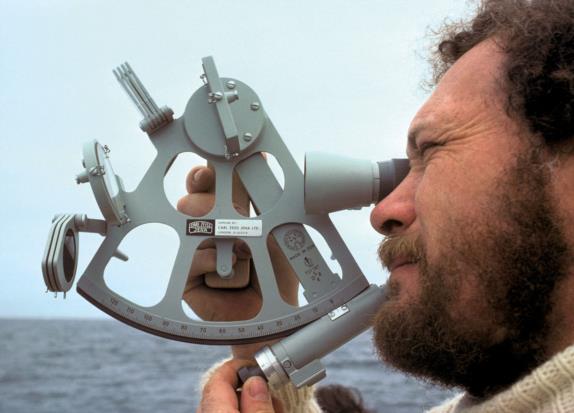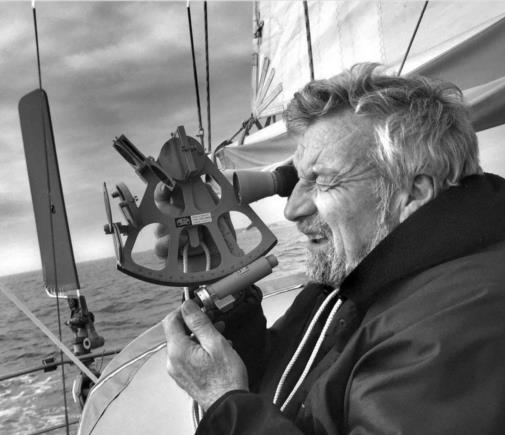
NavList:
A Community Devoted to the Preservation and Practice of Celestial Navigation and Other Methods of Traditional Wayfinding
From: Rafael C. Caruso
Date: 2023 Dec 13, 08:40 -0800
The photographs attached below are of:
1. Robin-Knox Johnston, who became the first sailor to complete a non-stop single-handed circumnavigation when he won the first Golden Globe sailing race, which took place in 1968-1969. As this was before the age of GPS or other global navigation satellite systems, he relied on celestial navigation. His memories of the race were published in his book “A world of my own”. Peter Nichols, in his book “A voyage for madmen”, describes the reasons, some of them tragic, why no other entrants finished the race.
2. Jean-Luc Van Den Heede, who finished first in the 2018-2019 “second edition” Golden Globe race, a fiftieth anniversary celebration of the original race. The organizers decided that the competitors would only use technology available in 1968, except for safety equipment, so celestial navigation was used once again. An intersting NavList conversation begun by Frank Reed (https://navlist.net/Golden-Globe-Race-Navigation-FrankReed-dec-2016-g37564) alludes to the 2018-2019 race.
3. Kirsten Neuschäfer, who was the winner of the 2022-23 Golden Globe race, which now takes place every four years. The rules regarding electronic devices have remained the same: except for safety gear, none may be used. As global navigation satellite systems and electronic navigation aids are banned, sextants and (only mechanical) timepieces have to be used for position finding. I believe that receiving radio broadcasts, including time signals, is allowed.
Both Knox-Johnston and Van Den Heede are shown using a Freiberger drum sextant (Trommelsextant). Despite the prominent “Carl Zeiss Jena” label on the frame, these sextants were, and still are, manufactured by Freiberger
Präzisionsmechanik in Freiberg, Germany. According to the excellent sextant book by Bill Morris, Carl Zeiss Jena — the post-WW2 remnant of the Zeiss company in the German “Democratic” Republic (a misnomer if ever there was one), before both Germany and Carl Zeiss AG reunified — marketed these sextants in Europe. My question is: what type of sextant is Kirsten Neuschäfer holding? I first thought it was a Plath Navistar Professional, but looking more closely it doesn’t seem to be one.
Best, Rafael









